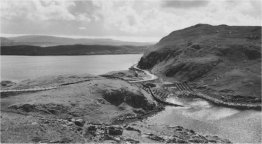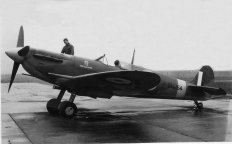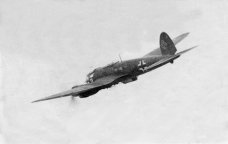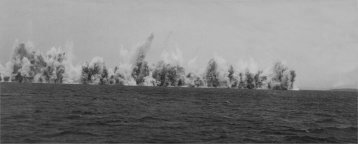Hillswick Eshaness Area Regeneration and Development
At the start of war Saro London and later the Catalina and
Sunderland Flying Boats operated from the seaplane depot ship "Manela" at
Sullom Voe.
Local men also helped to build camps for the forces and erected
tank traps wherever they were needed. This was solid pillars of mass concrete,
about four feet high that were positioned close to each other in lines as
can be clearly be seen opposite at Mavis Grind. They were intended to stop
the advance of enemy tanks should an invasion take place.
The Navy, Army and Air Force Institute or NAAFI
employed several Northmavine people around the islands. Most worked at Graven,
or went to Lerwick and worked at the NAAFI's beer bar at the Hillhead, known
locally as the Lang Bar. Others were posted to Sumburgh to cook or work in
the canteen there.
Home
Front Recall Project - Page 4
The German twin engine bomber the Heinkel III of the Luftwaffe
on the left was a regular sight over Shetland.
On the right is the Shetlander Spitfire bought by donations
collected from the local folk of Shetland.
To
help protect the flying boat base, a fighter airfield using Spitfire and Hurricane
planes was built at Scatsta. The nearby hamlet of Graven was transformed with
barracks, NAAFI's and everything else needed to look after an estimated 600
Norwegian and 1200 British servicemen who were stationed there.
Copyright:
No specific
authorisation has been sought for the war posters used here as it is believed
all images are now out of copyright, and have been used on this Home Front
web site for educational purposes. If you disagree with this please contact
Trowie Designs.
All
text and images other than war poster images and photo's kindly donated
by local people are the copyright of Trowie Designs.
The Home Front is a legacy of dedication,
adaptability and sacrifice on one hand and open hearted Shetland hospitality
and compassion towards the troops who were stationed here on the other hand.
Many servicemen were to remember long afterwards, the friendship of local
-families and some even married and made their home in Northmavine. For many
Northmavine folk, some of whom lost more than one family member in the war,
it was a time of great loss and heartbreak but they have the gratitude of
the people of Northmavine who today are free because of their sad loss and
thanks to projects similar to this one they will never be forgotten.





